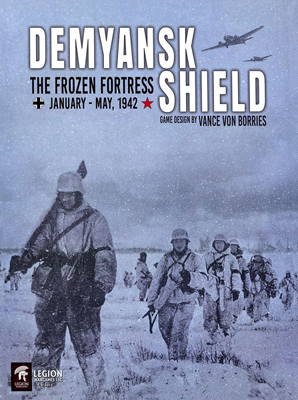 |
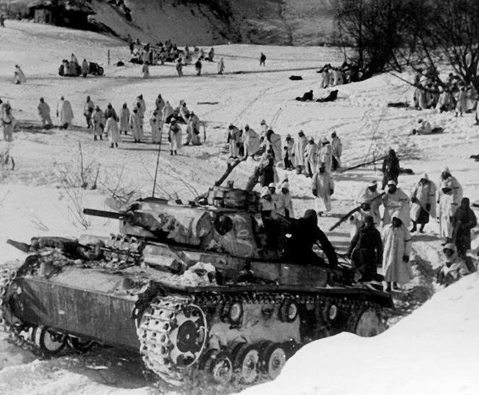 |
WARGAMESOSD Demyansk Shield - The Frozen Fortress |
|
wargames.wilkey.org.uk
|
 |
 |
| The Frozen Fortress January - May, 1942 |
| From 22 June 1941
Axis armies attacked the Soviet Union on a broad front. While the northern
group of armies (Army Group North) pushed towards Leningrad in a war of
rapid maneuver its 16th Army covered the flank in the Lake Ilmen –
Valday Hills area. Here, fighting began to settle down in early fall 1941
and by January had become static. Then the Soviets attacked. By late January
the Soviet 11th Army had broken the German front in several sectors and
threatened to surround perhaps 70,000 Germans around Demyansk. When 3rd
Shock Army broke the southern wing of German 16th Army Soviet advances
threatened now to destroy 16th Army and open the flank to Leningrad. It
is at this stage that game-play begins.
Demyansk Shield recreates the World War II campaign in the Valday Hills region of Russia, from late January 1942 through May 1942. One player will control the Axis forces (Germans), while his opponent controls the Soviet forces (Russians). The playing pieces represent the actual units that participated in the campaign and the map represents the terrain over which those units fought. The players maneuver their units across the map and conduct combat according to the rules of play. One player wins by capturing certain specified objectives while his opponent wins by avoiding those victory conditions. Courtesy of boardgamegeek.com |
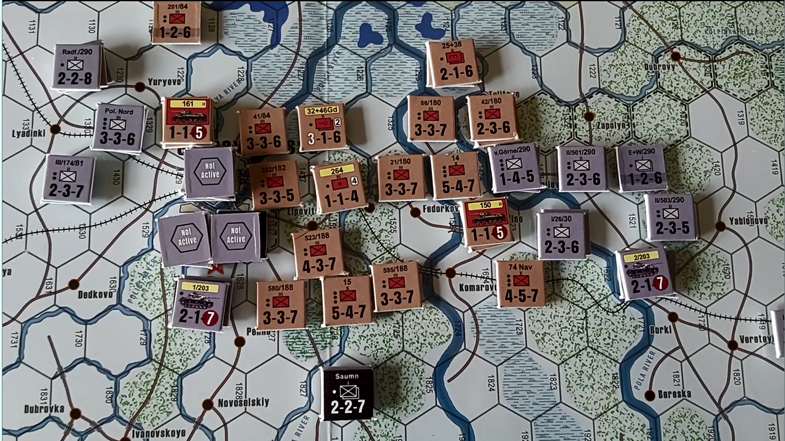 |
|
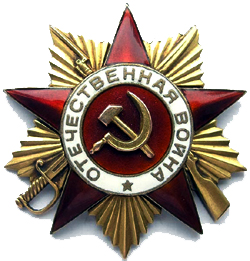 |
Staraya Russa The above picture shows the town of Staraya Russa as at 28th January 1942, at the end of the first game turn. The Soviets are the brown tiles and the Axis the grey and black (SS) tiles. Like Demyansk, the town is occupied at the beginning of the game and at the end of the first turn Axis forces in the town are already building strongpoints (tiles mark 'non active'), which when they are built on the next turn, will make the town almost impregnable. The town was occupied by the Germans between August 9, 1941 and February 18, 1944. Totally destroyed during the war, it was later restored. On February 16, 1984, Staraya Russa was awarded the Order of the Patriotic War. |
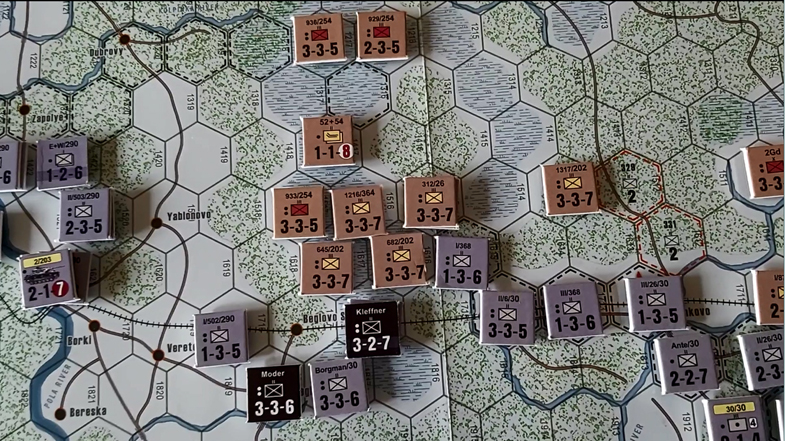 |
|
The
northern central swamps and wooded areas The above illustration shows the northern central area of the battlefield, with Soviet forces pushing slowly forward in Turn 1, although the Axis forces seem a little weaker in combat strengths (1-3-6 & 1-3-5 counters especially), they do occupy fortified locations on the map, see hexes with black-dotted inner hexes (see also illustration below). The weather for this first game turn is 'Frozen', which means that the Soviets are more mobile and flexible as they can freely move in the wooded areas though they have to pay two movement points when crossing swamps. |
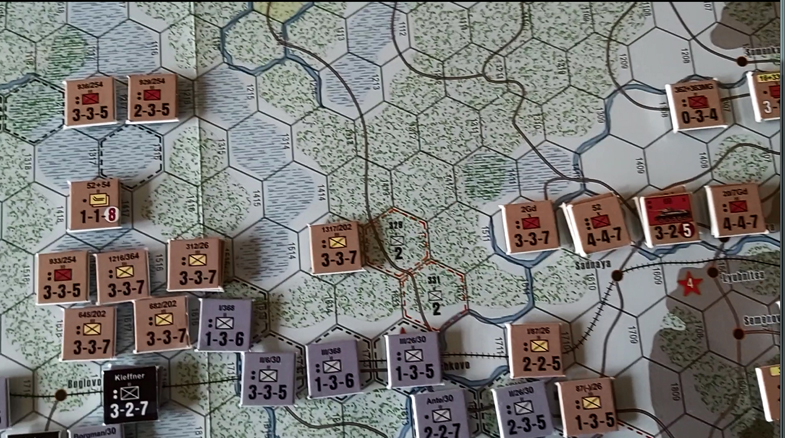 |
|
The historical setting From 22 June 1941 Axis armies attacked the Soviet Union on a broad front. While the northern group of armies (Army Group North) pushed towards Leningrad in a war of rapid maneuver its 16th Army covered the flank in the Lake Ilmen – Valday Hills area. Here, fighting began to settle down in early fall 1941 and by January had become static. Then the Soviets attacked. By late January the Soviet 11th Army had broken the German front in several sectors and threatened to surround perhaps 70,000 Germans around Demyansk. When 3rd Shock Army broke the southern wing of German 16th Army Soviet advances threatened now to destroy 16th Army and open the flank to Leningrad. It is at this stage that game-play begins. |
| Game
Mechanics Time Scale: 6 days (January to May 1942) Map Scale: 2 miles (3.25 km) Unit Scale: battalion to brigades Players: Two - Medium complexity Solitaire Suitability: Medium complexity Playing Time: 40+ hours (campaign only) |
Scenarios |
|
352
Die-Cut
Counters |
Game
Strategy Published by Legion Games in 2017, Designer Vance von Borries who also designed 'Roads to Lenningrad' for GMT. Strangely enough this game is played in a similar geographical area (Staraya Russa) |